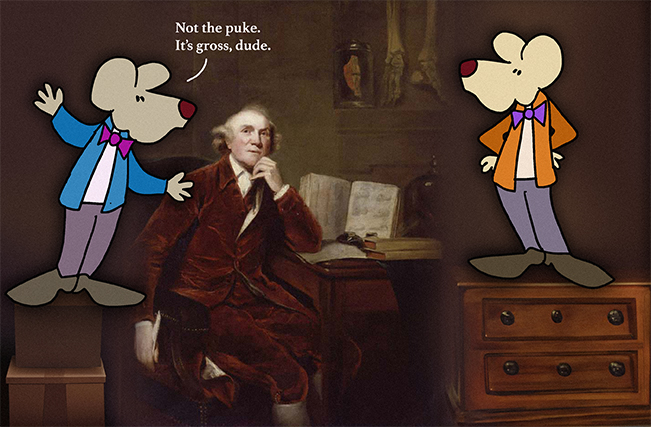Anyone who knows me also knows that I love science. I love how the world can be observed and, oftentimes, “figured out” by collecting those observations and applying them to form both theories and laws.
We have a lot of smart people to thank for the things we know today and the things we can do.
You would not be reading this now without the good measures of science. Or blending your smoothies. Or driving your cars. But you knew all of that.
What a lot of people don’t know is how much sacrifice some of our scientists have given in order to make the understanding of our world brighter and better.
I mean, we all know Madame Marie Curie ( and her husband Pierre ) suffered greatly because of her exposure to radiation while discovering and studying polonium and radium. The couple won the 1903 Nobel Prize in Physics for their work on radiation. They both also voluntarily exposed themselves to radium burns during the course of their research. We’ve all heard of this one, from time to time.
But many others, perhaps less notably, have suffered as well.
Take these two guys. Herbert Woollard and E.A. Carmichael did something that hurts any guy just to think about. In an attempt to study “referring pain,” they put weights on their testicles and measured where else they felt pain in their bodies.
If you’ve never experienced it, “referring pain” is a phenomenon that occurs when one part of the body, usually an internal organ, produces pain in another, uninjured body part.
So. In 1933, these two doctors tried to figure out what causes referring pain. They locked themselves into their London office. Then, one of them would attach weights to the testicles of the other, who was lying spread eagle on the table. The person who received the weights (they never “let on” which of them it was) would describe where in his body he felt pain. And also how intense it was.
I don’t know if they proved anything or not, but the one guy never had children and walked with a limp. I bet.
Speaking of things hanging down. We have Isaac Newton to thank for the discovery of gravity. But. He made a lot of other discoveries, too. This is the one that hurts. Isaac Newton voluntarily stuck a needle in his eye in the name of science. The experiment was designed to test optics and color perception. You see, our pal Isaac thought if he slid a long needle behind his eyeball, between the eye and the eye socket, and started poking, his vision would change.
It probably didn’t take a genius to figure out that one. It would change my vision, too. Anyway, it changed his. He noticed that he saw different perceptions of color and light as small, colorful dots that appeared when he applied a bit of pressure. All the while, he took meticulous notes with his free hand as he performed the experiment. You know, which involved sticking a needle behind his own eye.
There are lots of others who did extraordinary things.
— John Stapp broke numerous bones to study G-Forces.
— Albert Hofmann invented LSD and went for a life-altering trips.
— John Hunter gave himself Gonorrhea and Syphilis.
— J.B.S. Haldane tested “nitrogen narcosis” in deep sea diving. He could also blow smoke through his ear.
— David Pritchard studied autoimmune fnction by giving himself hookworm.
— Barry Marshall gave himself a stomach disease and won the Nobel Prize.
But the grossest of all might be this: Stubbins Ffirth bathed in vomit. Oh yes he did. Ffirth did this to prove Yellow Fever wasn’t contagious. This guy often went to extreme, unusual, and often disgusting lengths to prove his theory that yellow fever wasn’t contagious.
After the Yellow Fever Epidemic of 1793, Ffirth began an experiment where he poured fresh vomit from yellow fever patients into open sores on his body. He would also wipe it into his eyes. And lastly, Dr. Ffrith even bathed in it to prove it did not transfer the disease.
His theory was only slightly correct despite his questionable and stomach-churning tests. About 50 years after Ffirth’s findings, other researchers discovered yellow fever is transferred through an exchange of blood, usually spread by mosquitoes. But as far as I’m concerned, he should get the Nobel Prize for ultimate horrors in experimentation.
I hope you aren’t eating your breakfast, lunch, or dinner just now.
But thanks to science, our food is safe, we have microwave ovens, and trucks can drive on roads to bring that food to grocery stores in refrigerated cases. And so much more. Science.
“””””””””
“Science knows no country, because knowledge belongs to humanity, and is the torch which illuminates the world.” – Louis Pasteur
“””””””””
“The good thing about science is that it’s true whether or not you believe in it.” – Neil deGrasse Tyson
“””””””””
“Science is the key to our future, and if you don’t believe in science, then you’re holding everybody back.” – Bill Nye
“””””””””
All in the name of science. Yowza.
